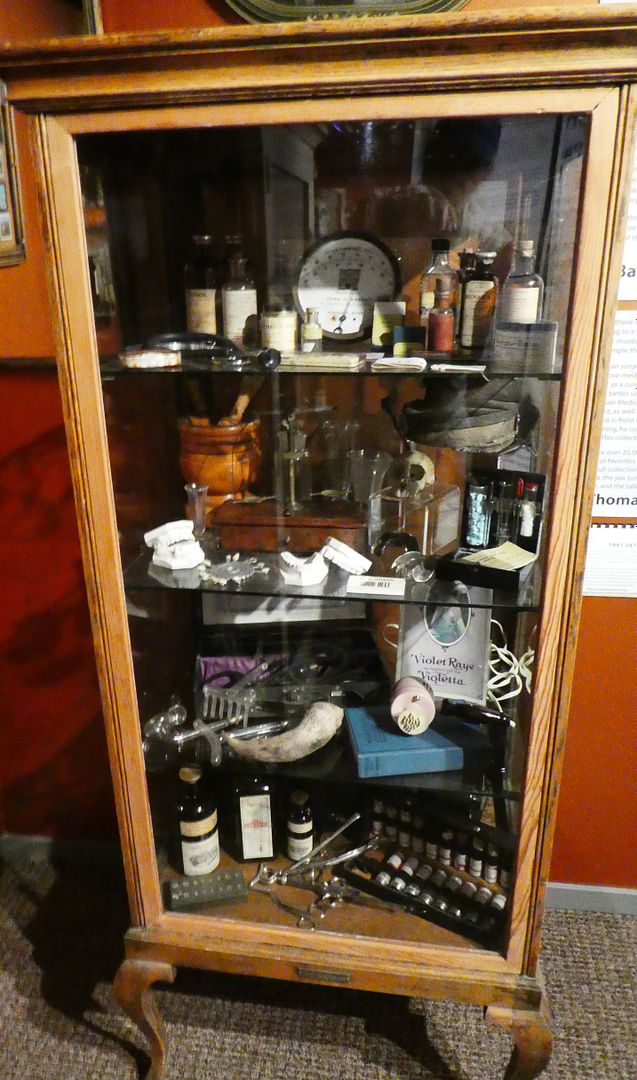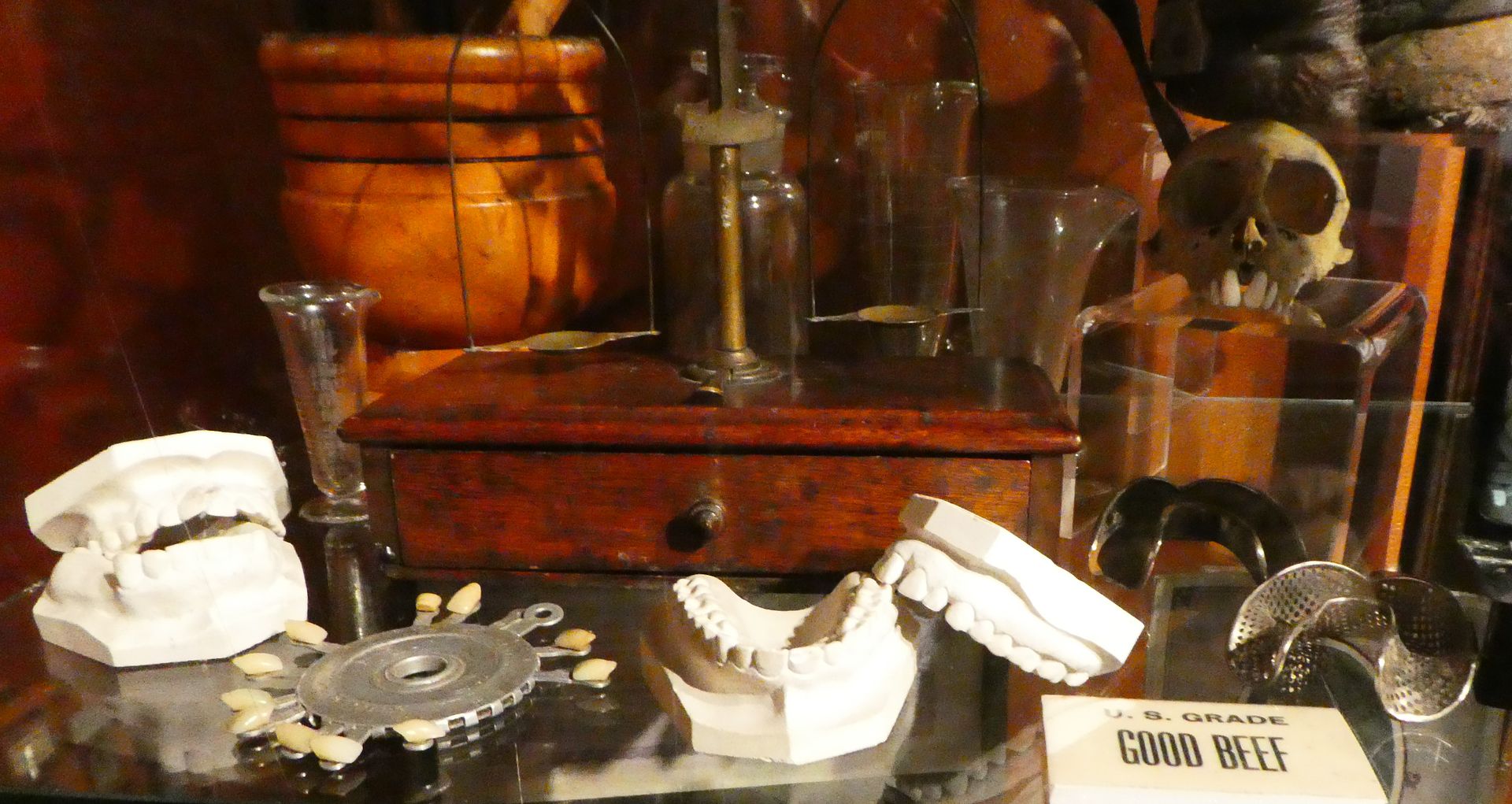The Historical Museum at Fort Missoula, in Missoula, Montana, has a room display called What is a Museum which explains what museums do. In Europe and America prior to the twentieth century, museums were “cabinets of curiosities” in which wealthy gentlemen and others displays the natural, ethnic, and historical oddities which they had collected. Some of these displays allowed limited access by the general pubic. One of the displays focuses on Cabinets of Curiosity.
Regarding the origins of cabinets of curiosities, Joan Lester, in an article in The Indian Historian, writes:
“In the eighteenth century, the well traveled gentleman placed in his home a cabinet, a piece of furniture, in which he displayed those curios that he had collected on his journies. They included anything that caught his fancy, either man-made or from the natural world. They were chance assemblages of objects arranged according to the whim of the owner.”

According to the display at the Historical Museum at Fort Missoula:
“Early museums focused on collecting and displaying items, but not necessarily interpreting them. Many also had a strange interest in collecting what others wouldn’t.
Some of the earliest collections of the weird and strange were called cabinets of curiosities or wunderkammers. The term cabinet originally described an entire room rather than a piece of furniture.”



Medical
One of the cabinets features various medical-related artifacts.







Museums 101
Museums 101 is a series of photo tours of museum exhibits. Also from this series:
Museums 101: A Cabinet of Curiosities (Photo Diary)
Museums 101: The Western Room in the Fort Dalles Museum (Photo Diary)
Museums 101: Blacksmith Shop and Saddle Shop
Museums 101: The Presby House Kitchen (Photo Diary)
Museums 101: The Secret Life of an Artifact (Photo Diary)
Museums 101: White River Valley Museum
Museums 101: Hagerman Valley Historical Museum (Photo Diary)
Museums 101: The Chinese in British Columbia (Photo Diary)
Museums 101: Los Angeles and the Automobile (Photo Diary)


